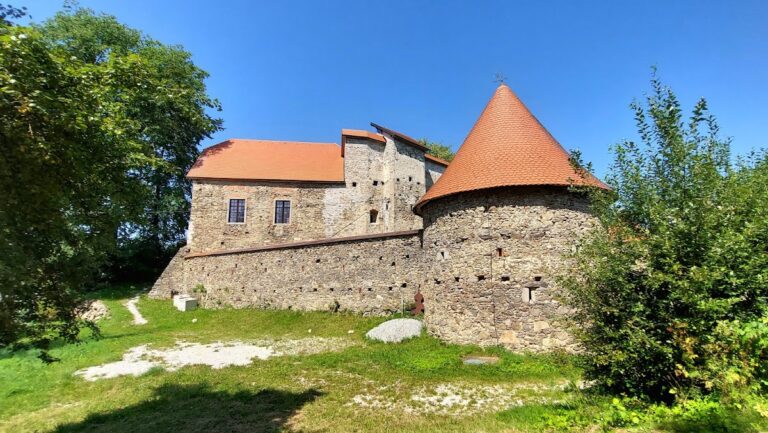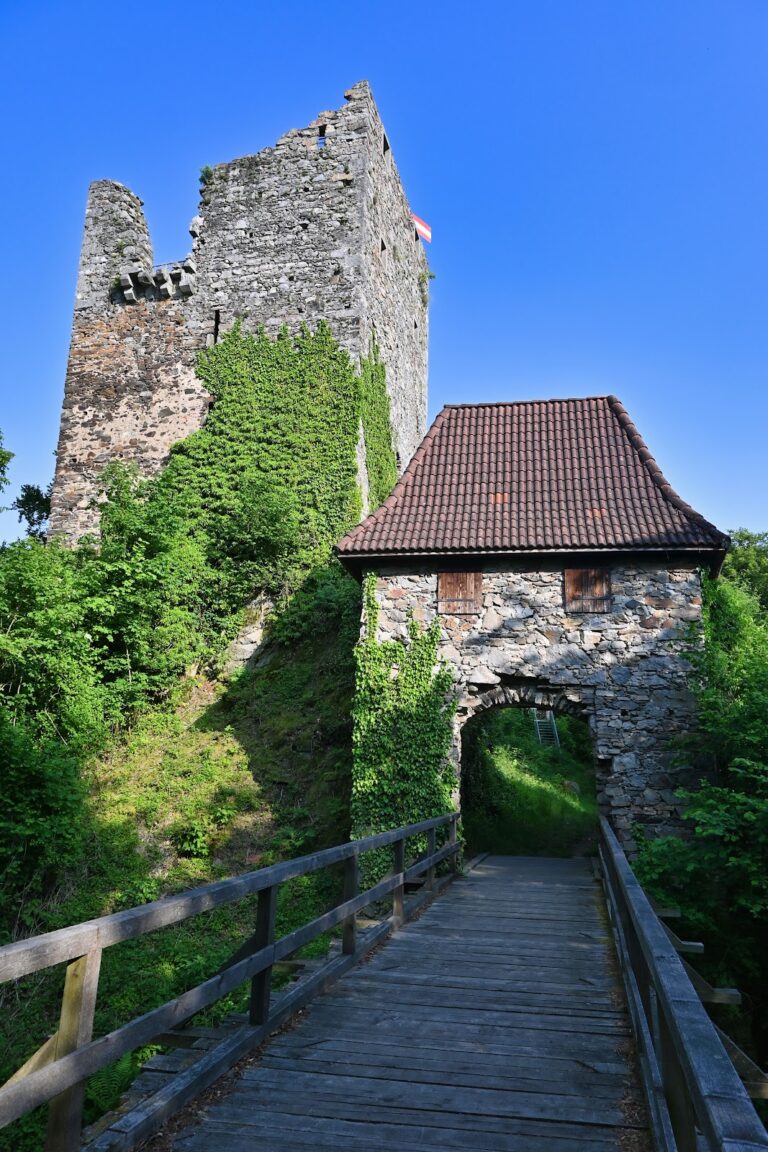Vítkův kámen: A Medieval Castle Ruin in the Czech Republic
Visitor Information
Google Rating: 4.7
Popularity: Medium
Google Maps: View on Google Maps
Official Website: www.vitkuvhradek.eu
Country: Czechia
Civilization: Medieval European
Remains: Military
History
Vítkův kámen is a castle ruin situated on a hilltop near the municipality of Přední Výtoň in the Czech Republic. It was constructed during the Middle Ages by the Czech noble family known as the Vítkovci, who were influential in the region.
The castle’s origins date back to around 1250 when Vítek I of Krumlov, a member of the Vítkovci family, established the stronghold. Positioned on a rocky hill rising over 1,000 meters above sea level, the fortress served as a border defense point and the administrative center for the family’s estates. Although first reliably recorded in documents from 1347, some sources suggest the site existed before 1277, illustrating its long medieval presence.
Ownership shifted in 1302 to the Rožmberk family, a powerful noble lineage in Bohemia. The Rožmberks maintained control for over three centuries, except for a brief interruption during the Hussite Wars. In 1427, amid the troubled religious conflicts of the time, the castle was sold to Reinprecht of Walsee but returned to the Rožmberks by 1464. During their stewardship, the castle underwent expansions, including fortified walls and five bastions designed to strengthen defenses. The site was significant enough that in 1394, King Václav IV was briefly held prisoner within its walls. By the late 1300s, the surrounding estate was extensive, containing fifteen villages and a glassworks establishment.
In the early 17th century, specifically 1602, Peter Vok of Rožmberk sold Vítkův kámen to Emperor Rudolf II of the Habsburg dynasty. The castle’s strategic position drew attention during the Bohemian Revolt of 1618, when insurgent forces besieged it. This threat led to the reinforcement of the garrison, which was increased to two hundred soldiers. Subsequently, the property passed to the Eggenberg family and was used as an imperial military post throughout the Thirty Years’ War, reflecting its ongoing military importance in the region.
Following the mid-1700s, Vítkův kámen was no longer actively maintained, suffering damage in a fire that contributed to its decline. In 1869, however, the Schwarzenberg family initiated partial restoration efforts, including the conversion of the main tower into a lookout point, preserving part of the structure for future generations.
During the Cold War era, the castle’s elevated position was utilized once again, this time by Czechoslovak state air defense forces as an observation post. A military presence was maintained until the political changes around 1990, when ownership passed to the local municipality. From 1998 onward, a civic group took responsibility for renovations that included installing a wooden staircase leading to a viewing platform atop the tower. This renovation highlighted the castle’s commanding views of the surrounding Bohemian and Alpine landscapes.
Literary associations also mark the site’s cultural history. The castle inspired Adalbert Stifter’s historical novel “Witiko” and was the setting of Adolf Heyduk’s tragedy “Under Vítkův kámen.” A statue commemorating Vítek I was erected in 2017 near the ruins but was removed in 2023.
Remains
The remains of Vítkův kámen present a clear picture of a medieval hilltop fortress adapted and expanded over centuries. The castle’s layout centers on a residential tower, or donjon, which originally measured about 14 by 17.5 meters and rose to four stories. Constructed with thick stone walls, the tower featured narrow slits for windows on the ground floor to allow light while maintaining defense. The floors above served residential purposes, with larger window openings and access to latrines, indicating attention to both comfort and functionality. The first floor was probably divided by wooden partitions creating several rooms beneath a large hall, while the upper floors served operational and defensive roles.
Access to the tower was gained via a bridge leading from an adjacent rocky outcrop over what was likely a defensive gap, opening into a trapezoidal courtyard enclosed by a substantial stone curtain wall. This courtyard contained castle buildings, including a vaulted structure along the northeastern wall, which was divided internally into three rooms at ground level with a platform above, possibly intended for mounting small artillery pieces.
In the 16th century, defensive needs led to the addition of an outer wall equipped with five bastions, low-lying fortified projections designed specifically for handheld firearms, reflecting evolving military technology. Unlike earlier castles built for resistance to siege engines or heavy artillery, these bastions were not protected by earthen ramparts but featured multiple firing positions stacked vertically on three levels. Continuous shooting galleries and loopholes (narrow vertical openings for aiming weapons) were incorporated into the walls, allowing defenders to cover all approaches effectively. A moat or ditch once fronted the principal entrance area, though the gatehouse itself, believed from historical accounts to have been tower-like in form, no longer survives.
Before the outbreak of the Thirty Years’ War, the tower was heightened by an additional floor, and minor alterations were made to doors and windows, possibly to enhance comfort or improve defense. The addition of gables to the tower’s roof also likely dates to this period. Defensive structures included a large semicircular wall closing off the southern bastion’s inner side, creating a feature referred to in mid-17th century records as a rondel—a rounded fortification occupying the rocky outcrop at the castle’s entrance. A similar rounded structure may have existed near the gatehouse area.
Today, what remains predominantly are the ruined tower and scattered fragments of the outer walls and supporting buildings. The castle’s tower has been adapted with a wooden stairway of sixty-one steps leading visitors to a platform that offers full panoramic views. Its position atop a 1,035-meter hill makes Vítkův kámen the highest castle site in the Czech Republic, underscoring its medieval role as a commanding lookout and military stronghold.










